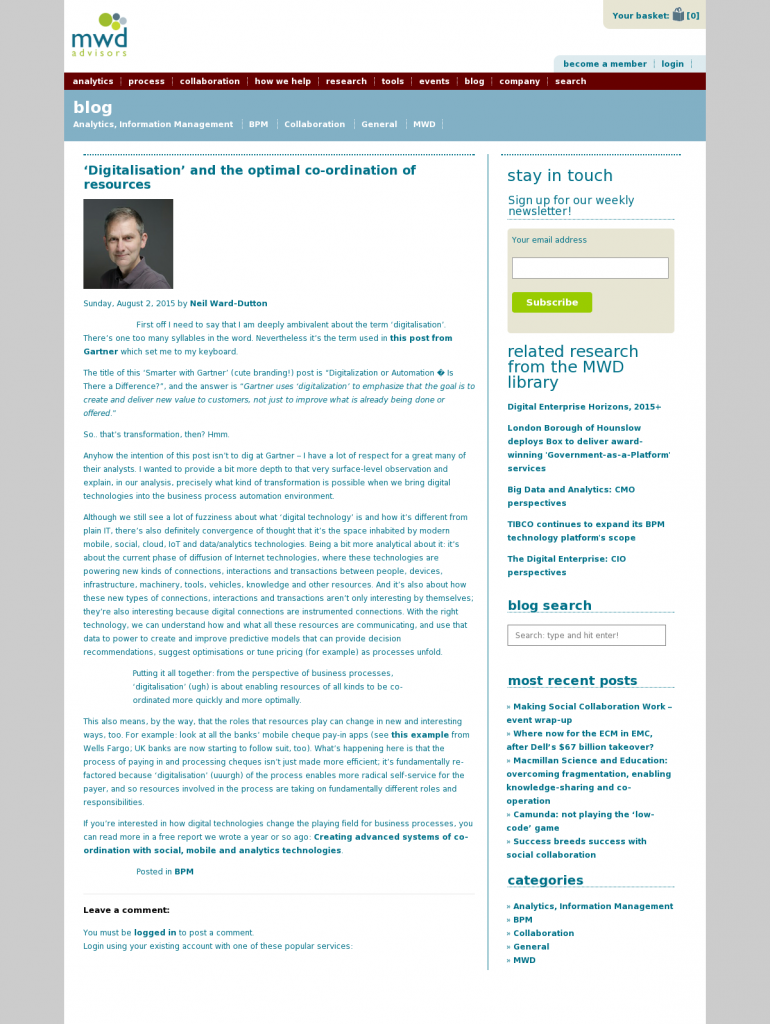‘Digitalisation’ and the optimal co-ordination of resources
First off I need to say that I am deeply ambivalent about the term ‘digitalisation’. There’s one too many syllables in the word. Nevertheless it’s the term used in this post from Gartner which set me to my keyboard.
The title of this ‘Smarter with Gartner’ (cute branding!) post is “Digitalization or Automation – Is There a Difference?”, and the answer is “Gartner uses ‘digitalization’ to emphasize that the goal is to create and deliver new value to customers, not just to improve what is already being done or offered.”
So.. that’s transformation, then? Hmm.
Anyhow the intention of this post isn’t to dig at Gartner – I have a lot of respect for a great many of their analysts. I wanted to provide a bit more depth to that very surface-level observation and explain, in our analysis, precisely what kind of transformation is possible when we bring digital technologies into the business process automation environment.
Although we still see a lot of fuzziness about what ‘digital technology’ is and how it’s different from plain IT, there’s also definitely convergence of thought that it’s the space inhabited by modern mobile, social, cloud, IoT and data/analytics technologies. Being a bit more analytical about it: it’s about the current phase of diffusion of Internet technologies, where these technologies are powering new kinds of connections, interactions and transactions between people, devices, infrastructure, machinery, tools, vehicles, knowledge and other resources. And it’s also about how these new types of connections, interactions and transactions aren’t only interesting by themselves; they’re also interesting because digital connections are instrumented connections. With the right technology, we can understand how and what all these resources are communicating, and use that data to power to create and improve predictive models that can provide decision recommendations, suggest optimisations or tune pricing (for example) as processes unfold.
Putting it all together: from the perspective of business processes, ‘digitalisation’ (ugh) is about enabling resources of all kinds to be co-ordinated more quickly and more optimally.
This also means, by the way, that the roles that resources play can change in new and interesting ways, too. For example: look at all the banks’ mobile cheque pay-in apps (see this example from Wells Fargo; UK banks are now starting to follow suit, too). What’s happening here is that the process of paying in and processing cheques isn’t just made more efficient; it’s fundamentally re-factored because ‘digitalisation’ (uuurgh) of the process enables more radical self-service for the payer, and so resources involved in the process are taking on fundamentally different roles and responsibilities.
If you’re interested in how digital technologies change the playing field for business processes, you can read more in a free report we wrote a year or so ago: Creating advanced systems of co-ordination with social, mobile and analytics technologies.
Leave a Comment
You must be logged in to post a comment.








